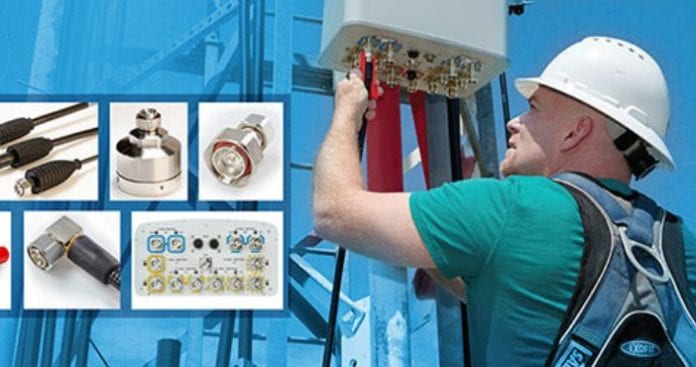The move to 4.3-10 RF connectors from 7-16 DIN connectors eases small cell deployments by reducing footprint and improving port density
Building and maintaining a mobile network is an incredibly complex and expensive task involving massive investment in infrastructure and spectrum assets. Mobile network operators are tasked with minimizing capex and opex, while still keeping up with the dramatic and ongoing growth in demand for mobile data. This dynamic means it’s imperative for MNOs to capitalize on any and all spectral and operational efficiencies available. As it turns out, one small network component can address that multifaceted goal.
Standardized by the Deutsches Institut für Normung, 7-16 DIN RF connectors are commonplace in cellular antenna networks. But, beginning in 2016, MNOs have begun adopting next-generation 4.3-10 connectors, which take up 40% less space and are 60% lighter than their predecessors.
CommScope Mobility Solutions’ Pedro Torres, director of technical sales, Southern Europe and CALA, described key challenges facing mobile network operators as addressing PIM, reducing network infrastructure complexity and keeping up with continued hardware miniaturization.
As network components get smaller, particularly with the quick adoption of small cells, technicians can have a hard time using 7-16 DIN connectors in tight spaces. Furthermore, with 7-16 DIN connectors, the mechanical and electrical planes are joined, which lends itself to PIM.
These issues are addressed with 4.3-10 connectors, which use radial contact to separate the mechanical and electrical planes. In addition to decreasing the likelihood of PIM, 4.3-10 connectors are easier to install–instead of the high-torque compression associated with 7-16 DIN connectors, 4.3-10 connectors can be deployed by finger-tightening the male coupling nut, then one-quarter turn of a wrench.
“PIM is one of the most serious challenges in today’s mobile networks,” Torres said, “and it is expected to increase as the number of bands coexisting in a site grows. To compound that issue, modern base station antennas can be equipped with more than 10 ports–a trend toward complexity that is only expected to increase. As wind load and tower space become limiting factors for network deployment, there is pressure on vendors to develop smaller antennas that address these limitation without compromising performance.”
To create a product ecosystem that supports the new generation of connectors, CommScope has brought to market compatible base station antennas, filters, combiners, cable and field-fit assemblies, feeder cable connectors, in-cabinet cables and DAS solutions.
Torres explained the migration from 7-16 DIN to 4.3-10 “will not happen overnight. The upgrade transition will extend over several years. Factors such as network evolution strategy, site sharing agreements and others may affect the pace of deployment. CommScope is here to facilitate this important transition and help mobile network operators remove as much complexity as possible in the installation of RF equipment.”
For more information on the role 4.3-10 connectors in the evolving telecommunications landscape, read Torres’ whitepaper, “Small footprint, big advantages: how 4.3-10 connectors enable the networks of tomorrow.”

